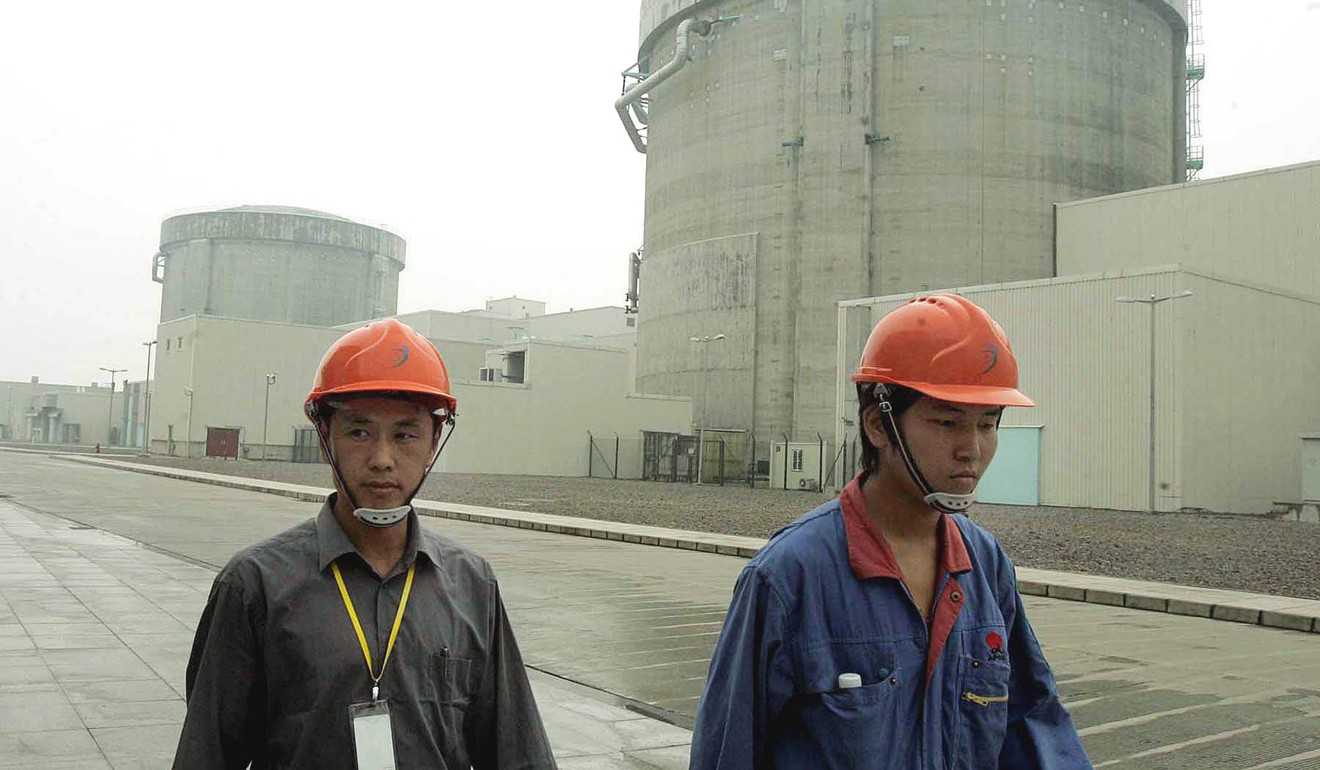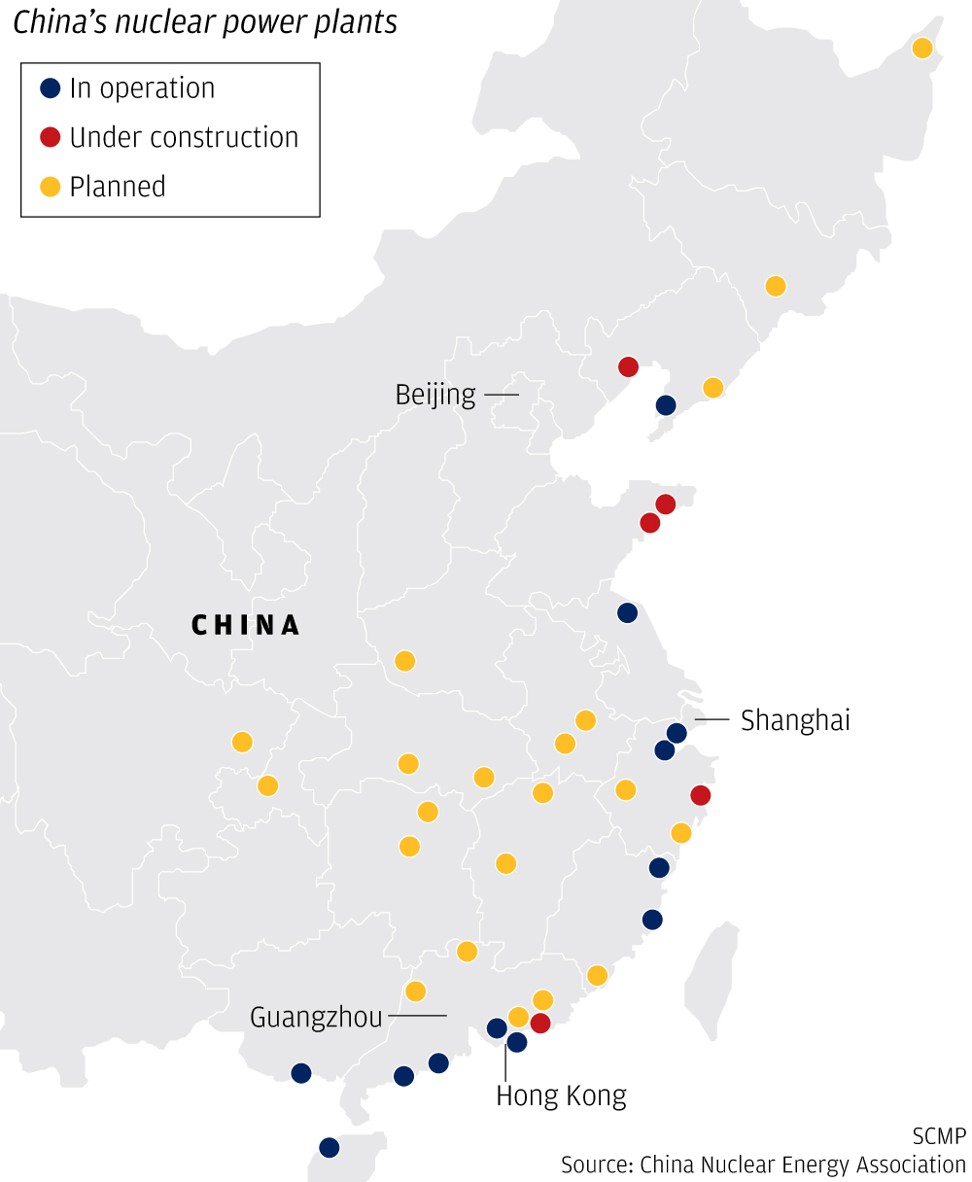Alice Shen
 China is pushing ahead with ambitious plans for its nuclear industry, including developing cleaner and safer next-generation technology.
China is pushing ahead with ambitious plans for its nuclear industry, including developing cleaner and safer next-generation technology.
A particular focus is a plan to develop the world’s first large-scale thorium-powered, molten-salt reactors – which could generate less radioactive waste and help reduce the reliance on fossil fuels to reduce the world’s energy needs – by 2020.
The head of one of the country’s research programmes said Chinese researchers had mastered the technology in laboratories and now aimed to be the first in the world to make it commercially viable.
Laurence Leung, a scientist with the Canadian Nuclear Laboratories, said China “is also leading the development of a few other models” and “is putting a lot of resources” into developing fourth-generation nuclear power.

Laurence Leung, from Canadian Nuclear Laboratories, says China is putting a lot of resources into fourth-generation nuclear power. Photo: Handout
At present the country relies on nuclear technology from the United States and France, but hopes the heavy investment will allow it to play a leading role in the multinational Generation-IV International Forum.
The forum, a 14-member intergovernmental R&D collaboration, aims to pool resources, allowing scientists to develop safer and cheaper next-generation systems.
Other members include the US, France, Russia and Canada, while Britain, Brazil and Argentina hope to play a more active role in future.
After whittling down nearly 100 proffered concepts, the forum is now focusing on developing six reactor models.
“China wants to test all the fourth-generation concepts before moving forward,” said Leung, who is also an adjunct professor at the McMaster University in Canada and Xian Jiaotong University in China.
“It’s still very cost-effective at the developing phase. Once you move to the commercial use, there is no turning back.”
A major focus is developing thorium-based, molten-salt reactors – which scientists hope can be developed to help meet the world’s growing need for energy without contributing to global warming.

China’s nuclear power plants generate only 3.6 per cent of the country’s total electricity needs.
These reactors are powered by controlled fission reactions in the same way as conventional uranium reactors.
However, the technology could prove to be cheaper and cleaner, while the use of thorium – which is less radioactive than uranium – should generate less waste.
Replacing water as a coolant with liquid molten salt could tap more of the energy available in radioactive materials and reduce the risk of a meltdown by slowing the nuclear reactions automatically if they get too hot.
Xu Hongjie, director of China’s molten-salt programme, told an academic conference in Shanghai last month that China had mastered the technology in laboratories and planned to put it into commercial use by 2030 – before anyone else did so.
The programme is led by the Shanghai Institute of Applied Physics, part of the Chinese Academy of Sciences.
China, the world’s largest electricity consumer, has already built 45 uranium-powered reactors, but these only generate 3.6 per cent of the country’s total output.
The figure is about 10 per cent for Canada, the US and France.
One advantage of developing molten-salt reactors is that because they do not need so much water, China can build them in remote desert regions, away from its densely populated east coast.

Work on two molten-salt reactors located in the Gobi Desert in Gansu province began in 2011. The 12-megawatt reactors were designed to show the viability of the technology and it is hoped they will be up and running by next year.
“We have been conducting research in Shanghai, starting from nearly nothing,” Xu said. “And we now mastered the technology to produce key devices for such reactors, owning 202 patents.”
China has invested about 2 billion yuan (US$300 million) over the past few years in molten-salt research and development, but building the plants will require tens of billions more.

Germany and Taiwan moved to phase out the use of nuclear power after the 2011 Fukushima disaster. Photo: AFP
The basic technology was developed in America’s Oak Ridge National Laboratory, which invented the reactors in the 1970s but the US stopped developing them as it decided to concentrate on uranium-based reactors because of their military applications.
“The US chose to focus on the uranium-based reactors,” said Luk Binglam, a nuclear engineering professor with City University of Hong Kong.
“The reasons are not all technical. You need to consider the political climate at that time.”
Xu told theMIT Technology Reviewin 2016 that Oak Ridge had posted most of the technical documents the Chinese team needed to develop the technology online for free.
There are a number of practical hurdles to overcome if the researchers are to develop a commercially viable model, but if they succeed it could make China a leader in the industry.
The development of cleaner and safer models could increase global demand for nuclear power, which has prompted widespread public concern in the wake of disasters such as Chernobyl and Fukushima.
Some countries have banned its use and other places, including Germany and Taiwan, have moved to phase out their existing reactors.
Leung said that another advantage of China developing the technology was that while it had to import uranium to power its current reactors, it had large reserves of thorium and would not need to rely on others for such crucial raw materials.
No comments:
Post a Comment